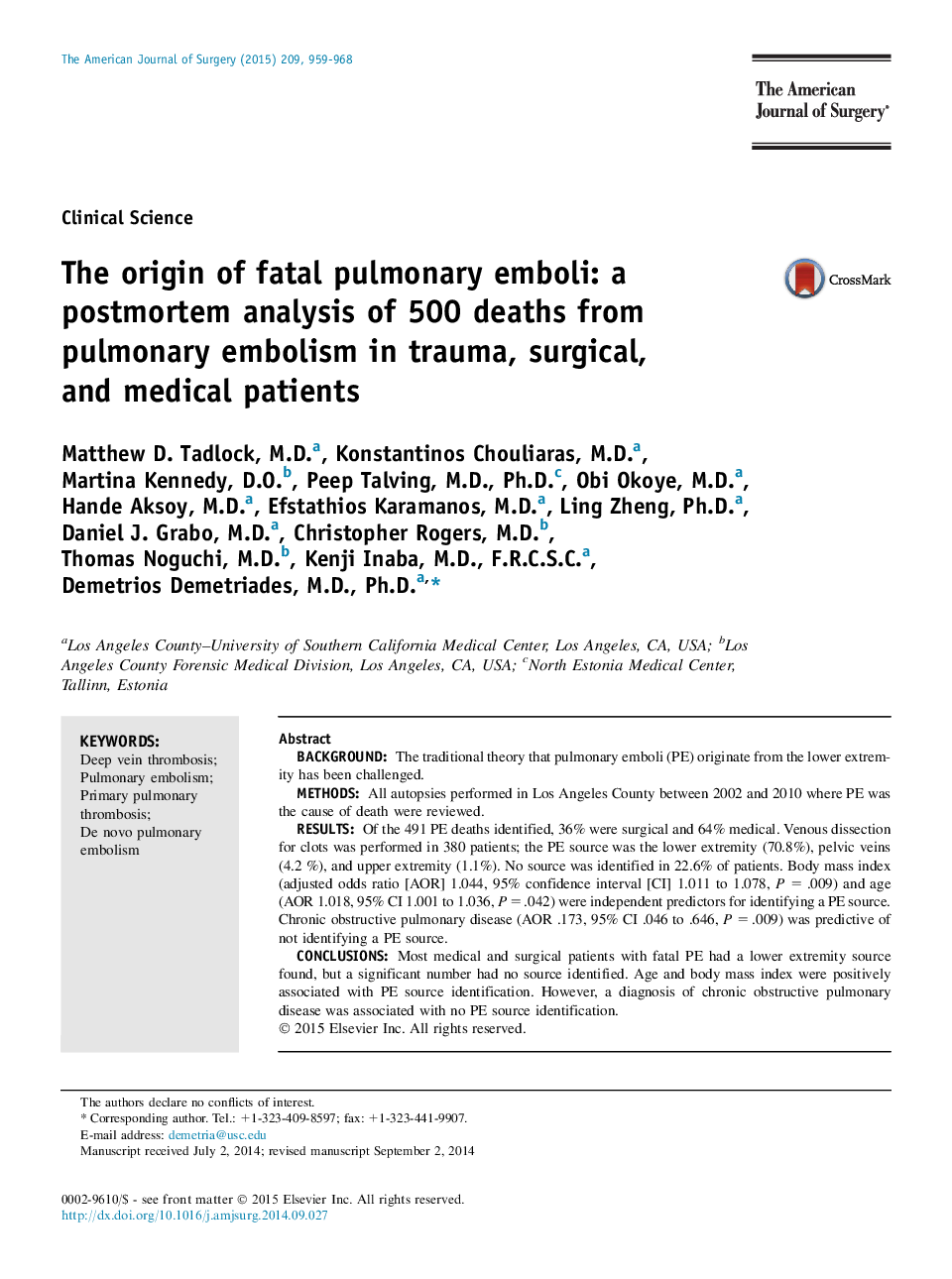| Article ID | Journal | Published Year | Pages | File Type |
|---|---|---|---|---|
| 6250714 | The American Journal of Surgery | 2015 | 10 Pages |
â¢The traditional DVT to PE sequence has been challenged.â¢We determine the PE source found at autopsy in surgical and medical patients.â¢The lower extremity was the primary PE source, but in 22.6%, no source was found.â¢COPD was independently associated with no PE source identification.â¢Further study is needed to determine the clinical significance of PE without DVT.
BackgroundThe traditional theory that pulmonary emboli (PE) originate from the lower extremity has been challenged.MethodsAll autopsies performed in Los Angeles County between 2002 and 2010 where PE was the cause of death were reviewed.ResultsOf the 491 PE deaths identified, 36% were surgical and 64% medical. Venous dissection for clots was performed in 380 patients; the PE source was the lower extremity (70.8%), pelvic veins (4.2 %), and upper extremity (1.1%). No source was identified in 22.6% of patients. Body mass index (adjusted odds ratio [AOR] 1.044, 95% confidence interval [CI] 1.011 to 1.078, P = .009) and age (AOR 1.018, 95% CI 1.001 to 1.036, P = .042) were independent predictors for identifying a PE source. Chronic obstructive pulmonary disease (AOR .173, 95% CI .046 to .646, P = .009) was predictive of not identifying a PE source.ConclusionsMost medical and surgical patients with fatal PE had a lower extremity source found, but a significant number had no source identified. Age and body mass index were positively associated with PE source identification. However, a diagnosis of chronic obstructive pulmonary disease was associated with no PE source identification.
